Ryan Hall's Blog, page 152
July 6, 2017
10 Mental Health Benefits of Running

“If you’re feeling stressed out, lace up those running shoes and take them for a spin.” So goes the accumulated wisdom of studies on how running can reduce stress. But the other mental health benefits of this ancient sport may be less familiar—and potentially even stronger motivation to break in those running shoes.
Decreases symptoms of depression
Multiple studies have concluded that regular aerobic exercise—and primarily jogging or brisk walking— reduces the symptoms of clinical depression. Strikingly, in one study, running was found to be as effective as an intervention for depression as psychotherapy. When study participants were assigned to one of three groups—a running group, cognitive behavioral therapy (CBT) group, and a group that received both interventions—all three of the groups experienced a similarly significant decline in depressive symptoms, with little difference in outcome between the running and CBT groups.
Improves your learning abilities
Both high-intensity running, in the form of anaerobic sprints, and low-impact aerobic running can improve your capacity to learn and retain new information and vocabulary, according to findings in 2007, published in the journal, Neurobiology of Learning and Memory. These benefits seemed to be more pronounced in the case of high-intensity running. However, both forms of running boosted levels of the protein BDNF (or brain-derived neurotrophic factor), and the neurotransmitter catecholamine, which are heavily associated with the brain’s cognitive (and learning) functions.
Sharpens your memory
The mental health benefits of running also include a sharper memory. When researchers in Brazil subjected sedentary, elderly rats to just five minutes of treadmill running several times a week over the course of only five weeks, the memory center in the rats’ brains reportedly experienced a surge in production of BDNF, which led to results on rodent memory tests that were akin to those for younger rats.
Protects the brain from aging
Running is a buffer against the effects of aging on the brain, according to research in Time magazine. Scientists set out to learn which was better for the aging brain, physical exercise or brain games. They found that physical exercise (in the form of running and other aerobic activities) won the day, on the basis of brain scans showing a lower rate of brain shrinkage and cognitive decline in elderly test subjects who were physically active.
Alleviates anxiety
Running and other vigorous forms of exercise can reduce anxiety symptoms and help you relax, according to studies cited by the Anxiety and Depression Association of America. In some studies, in fact, running may work as well as medication to relieve anxiety.
RELATED: Feeling Anxious? Research Shows Trail Running Benefits Your Brain
Helps you sleep better
These evidenced benefits to sleep, summed up in an article in Psychology Today, include regulated circadian rhythms, heightened daytime alertness, quicker onset of sleep, deeper sleep, and the reduction of symptoms in those with insomnia and obstructive sleep apnea.
RELATED: Sleep In—It Will Make You Faster
Boosts self-esteem
Running is linked with greater self-esteem—or so went the findings of a study of adolescent girls who were asked to run laps between markers and evaluated according to a tool known as the “Progressive Aerobic Cardiovascular Endurance Run (PACER).” Those who achieved higher PACER scores, by running more laps at a faster pace, reportedly exhibited higher levels of self-esteem, in addition to better physical fitness. In other findings, overweight kids who participated in vigorous aerobic exercise like running experienced a lift in self-esteem levels.
Increases your creativity
Intriguingly, running increased the creative thinking scores of participants in a study in the British Journal of Sports Medicine. That finding apparently joins others that evidence a link between running and higher levels of creativity, as a 2016 article in Business Insider reported.
Decreases cravings for unhealthy foods and substances
That finding seems to hold true whether your cravings are for junk food or for drugs and alcohol. After one hour of fast running, study participants were more likely to opt for healthy dietary choices that included fruit and vegetables over junk food. Results were similar when marijuana, not junk food, was the substance of choice. Heavy marijuana users experienced a marked decline in both cravings and daily use after just a few sessions of running on a treadmill, according to research at Vanderbilt University. And it turns out that running also reduces cravings for other drugs, whether it’s cocaine, meth, nicotine or alcohol, according to a 2011 analysis of the research appearing in Frontiers of Psychiatry.
Helps the brain heal from substance abuse
This holds true even when the drug in question is as potent a substance as meth, according to 2012 findings in the journal, Synapse. Meth decreases the brain’s production of dopamine and serotonin and burns out their receptors. Running, on the other hand, helps to re-normalize the function of these two key “feel good” neurotransmitters, and boosts their production.
RELATED: 10 Amazing Benefits of Running You Might Not Have Known
***
About the Author
Candice Rasa, LCSW, is Clinical Director of Beach House Center for Recovery, a drug and alcohol addiction rehabilitation center in Juno Beach, Florida. She has more than 10 years’ experience in the mental health and substance-abuse arena, and supports healing in the clients she serves from a solution focused, strengths-based client care.
The post 10 Mental Health Benefits of Running appeared first on Competitor.com.
61-Year-Old Pam Chapman Markle Looks To Set Record At Badwater 135

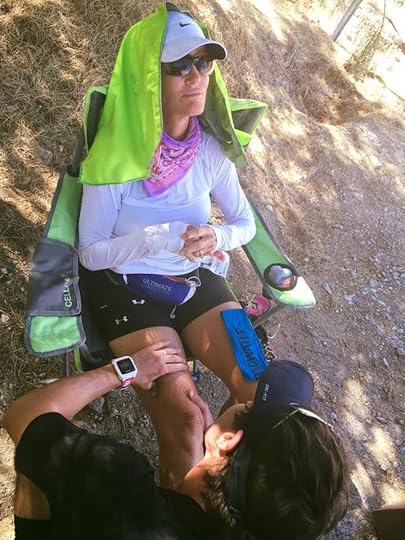
After about 100 miles of running, Pam Chapman Markle couldn’t take another step.
She felt awful. So, she stopped to lay down on the road, where her support crew wrapped her up and gave her salt pills. At that moment, still over 35 miles from the finish, Chapman Markle didn’t look as if she would complete her first Styr Labs Badwater 135, a 135-mile ultra race from Death Valley to Mt. Whitney in California.
But she says she’s never been a quitter. After 10 minutes, Chapman Markle stood up and proceeded to put one foot in front of the other.
“I just felt like I needed a break,” she recalls. “I never feel like I’m not going to finish. I just felt I was really sick.”
Chapman Markle kept going, finishing the 2016 Badwater race in 41 hours, 2 minutes and 4 seconds. It was a race record for women 60 or older, breaking the previous mark by 2 hours and 58 minutes. Though she had hoped to run between 38 and 40 hours, she crossed the line with a big smile on her face and her arms held high. It was a sometimes-painful, lesson-learning race—a crash course in Badwater 101—but all that was behind her at that moment.
“You just feel wonderful and proud of yourself for accomplishing something that’s very hard to accomplish,” she says.

Now Chapman Markle, a 61-year-old nurse anesthetist, cancer survivor and grandmother, is getting ready for her second Badwater on July 10. And, as proud as she is of what she accomplished a year ago, she believes she can break her own record by a couple of hours.
For one thing, she feels strong and healthy. A year ago she had a thyroid issue that triggered a rapid heart rate. Her doctor advised her not to race. It impacted her preparations and the way she felt. Since then she has recovered from a hamstring tear in December. Chapman Markle also feels good after recent hill-running sessions around Austin, Texas, training that is not possible in the flatlands around San Leon, her home outside Houston. She’s been running about 75 miles per week, and supplementing those miles with hours of cross training on elliptical machines. Plus, there’s the Badwater learning curve and the advantage of knowing the race.
Chapman Markle’s running resume isn’t long, but it’s impressive. She entered last year’s Badwater after just five years of competitive running. Her first race, in fact, was the 100-mile Rocky Raccoon in Huntsville, Texas. At 55, the former aerobics instructor went from an after-work jogger to 100 miles in one step, bypassing 5Ks, 10Ks and the marathon for an ultra.
“I actually wanted to run 50 miles first, but it was full,” she says. “So I thought, ‘What could 100 miles be?’ Well, I found out.”
RELATED: How To Train For Your First 50K
It was hard, but she liked the solitude, challenge and wide-open spaces. And she completed it in 28 hours and 45 minutes, despite a leg injury. Chapman Markle has since completed 10 other 100-milers, plus the Brazil 135. Much like Badwater, she says the Brazil race re-energized her as an ultrarunner. She completed it last year in 43 hours, 42 minutes.
“Brazil brought the fun of running back to me,” she says. “I was getting kind of bored with it a little bit, and I stepped outside my comfort zone…It was a spiritual awakening. It was beautiful. The people were beautiful. I realized why I was ultrarunning.”
Then came Badwater.
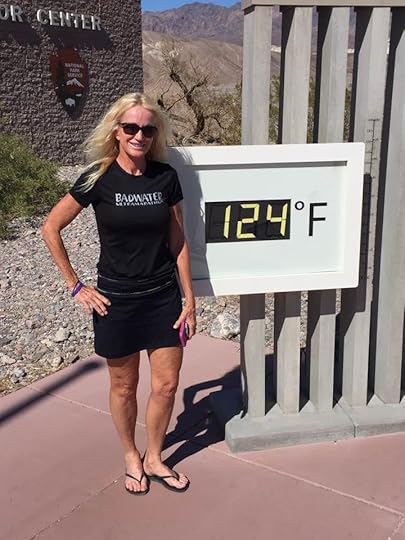
Chapman Markle was used to Texas heat, but the dry heat of the desert was different. With her sweat quickly evaporating, she had a hard time understanding that she was getting dehydrated and losing salt. She suffered leg cramps and chills early on.
She also misjudged how the lack of sleep would impact her. With the race starting at 8 p.m., she ran through two nights, a first for her. And, there was her unfamiliarity with the course and her failure to fuel for the final push up to Whitney Portal, which she calls “a huge mistake.”
“I learned I needed to watch my electrolytes better,” she says. “And I learned that fueling…it’s more important for me to stay hydrated than it is to put in calories. That’s pretty much what I’m going to be doing is using mostly liquids in this race.”
With all that in mind, she’s confident that she can go faster. Her coach, former Badwater champ Lisa Smith-Batchen, agrees.
“She’s definitely capable of doing a few hours faster,” Smith-Batchen says. “There’s a lot that comes with knowing the course now, knowing what you’re really getting into.”
Plus, Smith-Batchen says Chapman Markle has a rare attitude. She embraces every day as a “joyful person.” She survived cervical cancer at 19, and in her job as a nurse, she sees people fighting for their lives.
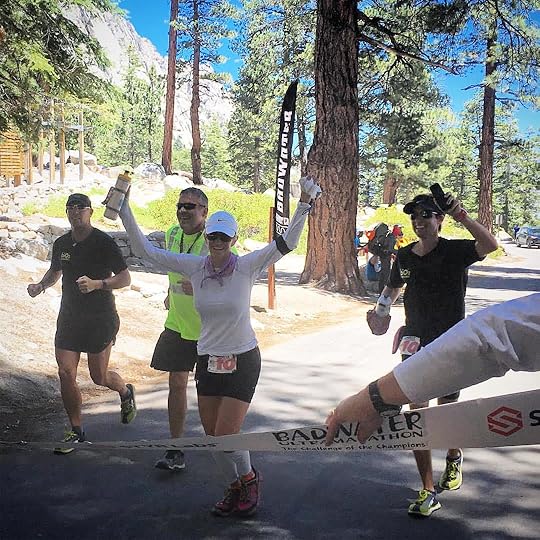
“That person is suffering,” Smith-Batchen says of Chapman Markle’s career caring for others. “When we’re out there at Mile 100 and it’s 120 degrees, sure, we’re miserable, we’re in pain, but we’re not really suffering because at the end of it…you’re going to be fine. Pam’s mental fortitude, she’s able to distract herself from thinking, ‘I’m in pain, and that this is temporary.’ It’s what it takes.”
Plus, Chapman Markle runs not only to challenge herself, but also to inspire others. She has seen too many people not take care of themselves, with bad diets and sedentary lifestyles, especially as they age. In her 60s, she wants to show that there is another way. In addition to running, Chapman Markle surfs, swims, bikes, hikes and roller blades.
“I want people to say, ‘Oh my goodness, here’s a woman, she’s over 60 and she can do it. Maybe I can do this,’” says Chapman Markle. “I’ve had several people write on my Facebook account that I’ve encouraged them, even to walk, to get out and walk. That’s my whole purpose. When you’re aging, just embrace it and do the best you can every day.”
RELATED: 86-Year-Old Has Run Every Peachtree 10K
The post 61-Year-Old Pam Chapman Markle Looks To Set Record At Badwater 135 appeared first on Competitor.com.
NYRR And New Balance To Give 2,500 Kids Free Running Shoes
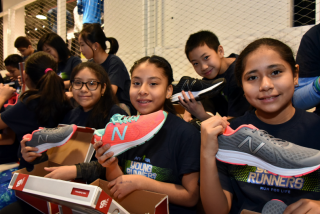
Photo: Courtesy of NYRR
On July 8, 2,500 runners will descend upon Central Park for the New York Road Runners’ (NYRR) 1 for You 1 for Youth 4-Mile race. Race participants all receive a new pair of New Balance running shoes purchased by NYRR. In turn, 2,500 participants in NYRR’s free youth running programs will also receive a free pair of running shoes.
It’s all part of NYRR and New Balance’s 1 for You 1 for Youth program, which launched in January. Created to provide young runners with new and high-quality running shoes, the purchase of each pair of shoes at the NYRR RUNCENTER—featuring the NB Run Hub—means New Balance will donate a pair of running shoes to NYRR’s youth programs. In turn, New York Road Runners distributes the running shoes to participants in their free youth running programs.
“We’re so excited about this race and the impact it will have on inspiring the next generation of runners, which is an important part of New York Road Runners’ commitment to inspire people of all ages and abilities through running,” said Michael Capiraso, president and CEO of New York Road Runners, in a press release. “Beyond encouraging and educating kids on the benefits of running, it is great to ensure that they are provided with running sneakers to make their running experience better. We are so fortunate to have a partner in New Balance that shares our passion to encourage the next generation of runners, and their year-round support makes this great program possible.”
Roughly 300 youth runners take part in the Kids’ Races at the NYRR 1 for You 1 for Youth 4M, which is the third set of kids’ runs in a series of six happening at NYRR events throughout the summer. On Friday before the race, Olympian and Team New Balance Athlete Kim Conley will be joining the group of students taking part in the race, and will welcome the group, help distribute shoes and join them on a run in the park to kick off the weekend of racing.
The post NYRR And New Balance To Give 2,500 Kids Free Running Shoes appeared first on Competitor.com.
July 5, 2017
Why Everyone Appears To Be A Better Runner On Social Media

Ever wonder why you leave a Facebook binge feeling worse about yourself than before?
What is it about social media that causes such strong reactions within us? Well, a lot of it has to do with impression management and how we perceive the lives of others.
Impression management refers to conscious and subconscious attempts to influence the perceptions of other people about an object or thing (in this case, you) by regulating and controlling information during social interaction. Impression management is often compared to running your own broadcast channel that tries to tell the world how attractive, awesome, athletic, and smart you are, among other things.
However, impression management isn’t necessarily pretense; it’s just “selective nondisclosure”—because you will leave out certain, ahem, details so that you are portrayed in a way that is consistent with how you see (or want to see) yourself. For most athletes, this is fast, fit, competent, smart, exciting, fun, and shaggable, which may be a frequent departure from how you feel in real life (IRL).
When you’re on the receiving end of someone else’s in-your-face impression management, it’s annoying precisely because you’re on the opposing team. Shrinks call this a self-evaluation threat. It sends the message that their social standing is higher than yours because they’re fitter, leaner, faster, grittier, happier (need we go on?) than you.
And it’s f*cking irritating.
Sometimes it’s really overt, such as someone telling you literally how great they are. Sometimes it’s less overt but still noticeable—when a person’s anecdotes are only about how they saved the day or were proved right. At other times, impression management can also be really subtle, as in when and where people “check in” on Facebook. Some people prefer to reverse engineer the process entirely by faking inadequacy, in order to fish for compliments or to create a personal handicap, portraying themselves as deficient in order to catch opponents off-guard and gain an advantage.
The one thing we know for certain about impression management is that we all do it—at least to some degree. And make no bones about it: It’s a performance in every sense of the word.
Technology has taken a lot of the effort out of impression management by helping us broadcast truthiness about our abilities and all-around awesomeness. Social media is a particularly grand stage for your performance because an audience is guaranteed if you have an account. With the click of a button, you can instantly pebble-dash your social network with photos, updates, check-ins, plans, trips, experiences, and mood states—the golden currency of impression management.
RELATED: A Runner’s Guide To What Not To Do On Social Media
This excerpt is adapted from The Brave Athlete by Dr. Simon Marshall and Lesley Paterson.
The post Why Everyone Appears To Be A Better Runner On Social Media appeared first on Competitor.com.
Why You Should Run The Mont Blanc Marathon


Flying to Europe to run a race may seem like an extravagance. And it is, no doubt. But, if trail running is your jam, heading to France to hit the dirt and experience the cult status of European trail running first hand at the Mont Blanc Marathon, in Chamonix, is an inspiring event like no other.
The event, which takes place the third week in June, encompasses eight trail races, including an 80K, a marathon, 15K race for 16-22 year olds, a half marathon, nighttime team race, 10K, vertical K and a kids race for young dirt lovers from 5-15 years old. Even with all of the events, the Mont Blanc Marathon is more than a race. It’s an international celebration of mountain running in a veritable trail playground like no other. And the best part is everyone is invited. There are legions of avid fans lining race courses and crowding the mountain top finishes, an adventure-loving culture, a race village, cheese (so much cheese), wine and some of the most beautiful trails you will ever have the chance to run.
“You experience the French culture and energy around sport, plus it’s the most beautiful course in the world,” says Mike Ambrose, a marketing associate for Salomon, who traveled from Ogden, Utah, to run the 80K. “There is so much fanfare around sport, especially in these mountains. People have such appreciation for it.”
RELATED: Stunning Images of France’s Mont Blanc 80K From Start to Finish
Even if you aren’t running a race (which you should), the spectating is off the charts with mountain top finishes, gnarly climbs and serious on-course battles. Between races, hang out with athletes in the race village or explore the valley’s trails on your own. Hiking up is a popular choice when it comes to trails around Chamonix. Thanks to gondolas, which take care of the ascending for you, down and cross-country routes are also popular choices. Take a break in-between trails with mid-run refreshments at refuges and trail side cafes. If you think a cola or a coffee is good after your run, try one in the middle! The only limit to the options is time and your abilities. For ideas, get a trail map and check in with the folks at Run the Alps for guiding services and suggestions.

However don’t let the sheer beauty of the place fool you. Running in and around Chamonix is serious big mountain running, with rocks, ledges and rapid weather changes. A little preparation goes a long way into making your experience safe and enjoyable. All the events have mandatory gear requirements, so be sure to read the fine print before signing up. Even if you’re having a tough race or run, remember to appreciate the athletic history and splendor of the place.
“I probably had the worst race of my life yesterday, but I cannot wait to do it again net year,” Ambrose says. “When I come here, it brings out every good feeling in me about running. It’s also really easy to be grateful and in the moment at this race, even when I’m dizzy and feeling like shit!”

Where to stay
Airbnb is a popular option in Chamonix. There are plenty of charming hotels as well. Try L’Hélio or Chalet Hôtel Prieuré for their central locations, well-appointed modern rooms, reliable Wi-Fi and in-hotel restaurants and bars.
Where to eat
La Calèche
If you are in the mood for authentic regional cuisine (including LOTS of cheese), an impressive wine list and old-school décor, this is a must visit.
La Remise
Just outside of Chamonix in Argentiere, this cozy, alpine oasis offers updated interpretations of classic French cuisine made with local ingredients.
What to do, besides run
Mer de Glace
Catch the iconic red Montenvers Train, a rack and pinion railway, in Chamonix. Take it up to Montenvers where you can explore the Mer de Glace glacier. (Fair warning, LOTS of steps are involved.) Enjoy a meal at the Grand Hotel du Montenvers and set out on several hikes. Additionally, if you’re up for it, you can run the 10K back to Chamonix.
Auguille du Midi
Simply riding the cable car to Auguille du Midi is a breathtaking experience. Once you’re there, be sure to take in the 360-degree views of the French, Swiss and Italian Alps, explore the museum and grab a bite to eat.
Where to get your gear
There are many options for picking up new running gear. Simply cruise through the race village to check out the latest offerings. Or stroll the streets of Chamonix and peruse the racks at more than a dozen outfitters and retail outlets, such as Salomon, The North Face, Columbia, Arc’Teryx, Asics, Patagonia and Mammut.
RELATED: Running Around Mont Blanc in 6 Amazing Days
The post Why You Should Run The Mont Blanc Marathon appeared first on Competitor.com.
6 New Products To Keep You Hydrated All Day Long
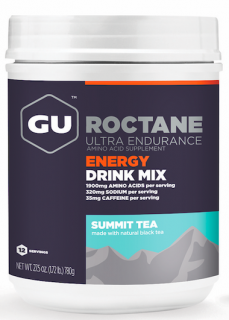
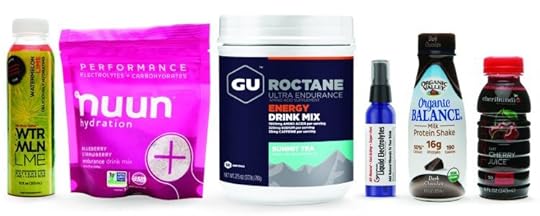
Hydration is not something athletes should take lightly. Physical and mental performance can plunge with as little as a 2 to 3 percent drop in body weight caused by dehydration. Thankfully, there has never been a greater variety of cleverly formulated products available to keep you hydrated before, during and after your sweat-fests. Here’s a look at some of our favorite ways to drink up.
WTRMLNLME
$4 for 12-ounce bottle
It’s never a good idea to start a workout without your fluid levels topped off. But sometimes it’s hard to get excited about drinking more yawny water. Enter this watermelon juice made with cold-pressed watermelon flesh, real lime juice and no added sugars. Since watermelon is about 90 percent water, it’s an ultra-hydrating way to get ready to work hard. And recent research found that drinking watermelon juice before exercise might help quell muscle soreness afterward.
Nuun Performance
$20 for a 16-serving pouch
Moving beyond an extensive lineup of hydration tablets, Nuun is now offering its first powdered drink mix geared toward longer workouts. Formulated with oversight from sport nutrition guru Stacy Sims, PhD, Nuun Performance contains multiple sources of non-GMO carbohydrates (dextrose and cane sugar) at a modest concentration. This may allow for superior carb and fluid absorption without gastro woes. A range of electrolytes are in each scoopful too. The not-too-sweet orange-mango and blueberry-strawberry flavors come from actual dried fruit. With a mere 8 grams of carbohydrates per serving, you may need more to go hard for 90-plus minutes.
GU Roctane Energy Drink Mix Summit Tea
$30 for a 12-serving canister
Formulated for athletes who are looking to perform on the long haul, this bonk-proof drink mix unapologetically contains plenty of carbohydrate energy: 59 grams for a 2-scoop serving. The use of multiple simple carbs (maltodextrin and fructose) translates to a faster, more-efficient delivery of calories, sodium and fluids from your gut into the bloodstream. The addition of amino acids may help lessen muscle breakdown and bolster mental focus. As a powder, you can tailor the water-to-mix ratio based on personal needs and what your stomach can tolerate. The summit tea flavor, which includes caffeine, offers a welcome respite from the citrus and berry tastes that dominate sports drinks.
RELATED: What Dehydration Does to Your Running Performance
Enduropacks Electrolyte Spray
$19 for a 2-ounce bottle
A perfect solution for athletes who don’t have an appetite for sugary, flavored sports drinks, those with sensitive tummies or big sweaters. With just a few pumps, you’ll infuse your water bottle with a very subtle lemony taste and a calorie-free source of several different electrolytes and minerals to aid in muscle contraction, fluid balance and mitigate the risk for hyponatremia. The slim bottle can stash in a pocket, so you can squirt more into a freshly filled water bottle on the run. You can even add an electrolyte boost to another sports drink. If your workout is more than 90 minutes, bring along some caloric fuel as well.
Organic Valley Organic Balance Dark Chocolate Protein Shake
$3 for 11-ounce bottle
Studies show that gulping chocolate milk post-workout can ramp up recovery. How? The drink you loved as a kid provides a trifecta of protein, carbs and fluid to encourage muscle repair, the replacement of spent energy stores and rehydration. Made with fair-trade chocolate and organic milk sourced from cows allowed to nibble in pastures (an evolutionary normalcy that increases nutrient levels in moo juice including anti-inflammatory omega-3s), this drink is like chocolate milk to the extreme. Each shake supplies 16 grams of muscle-friendly protein, about twice the amount found in typical chocolate milk.
Cheribundi Tart Cherry Juice
$2.50 per 8-ounce bottle
Research suggests that sipping cherry juice, particularly the pucker-inducing tart variety, can help you rebound quicker after a sweat session. That’s because cherries are loaded with potent anthocyanin antioxidants that work to lessen the oxidative muscle damage induced by spirited exercise. Cheribundi packs in 50 cherries per bottle that also provide natural sugars to help restock spent carbohydrate stores. Drink straight or blend into post-training smoothies.
RELATED: Whoa, Gatorade Endurance Now Tastes Totally Different
The post 6 New Products To Keep You Hydrated All Day Long appeared first on Competitor.com.
3 Recipes For Post-Run Homemade Energy Bars
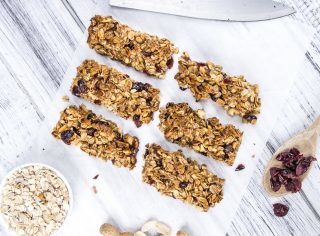
If you sweat as much as I d0, you just want to dive headfirst into a cold shower after a run. However, it is so important to eat within 30 minutes of your workout—after you’ve completed stretching. As much as you want to rinse the salty filth and tears off, go have a snack first.
These homemade energy bars are a great option to snack on during that post-workout timeframe because of their effective ratio of carbs to protein. In addition, the best thing is you can tailor them to fit your personal tastes.
The main ingredients in these bars are rolled oats, which provide the carbohydrates you need post-workout to raise blood glucose and stimulate muscle building. They are bound together with honey and nut butters, which provide natural sweetness, protein, and healthy fats as part of a healthy, filling diet. The chewy texture is reminiscent of a Clif Bar, but not as sticky.
Once you have the base, you can add mix-ins for extra flavor and nutrients. I chose various chopped nuts for the crunch and healthy fats, dried fruit for the sweetness and fiber, and dark chocolate for the antioxidants (and because I can’t go the whole day without chocolate). However, while dried fruits are delicious and an awesome addition to these bars, don’t overdo them in your general diet, due to the extra sugar.
RELATED: 4 Energizing Trail Mix Recipes for On-The-Go
Here are a few ways to make these DIY energy bars.
DIY Energy Bars
Prep time: 10 minutes
Chill time: 20 minutes
Ingredients
Base:
½ cup honey or agave syrup
¼ cup almond butter
½ cup all-natural peanut butter
3 cups rolled oats
Additions for Salty-Sweet Pistachio Cranberry Bars:
¼ cup chopped pistachios
½ cup dried cranberries
Additions for Triple Fruit Bars:
¼ cup chopped prunes
¼ cup dried blueberries
¼ cup dried cranberries
Additions for Chocoholic Bars:
2 tablespoons melted 100% dark chocolate
2 tablespoons white chocolate chips
¼ cup sliced almonds
Instructions
1. In a medium saucepan, melt the honey, peanut butter, and almond butter over medium heat until thoroughly mixed together.
2. Remove from heat and add in oats. Stir to combine. They will be slightly crumbly, but don’t worry. Chilling them in the refrigerator will solidify them.
3. Separate oat mixture into three separate piles, or however many different bar versions you would like to make. Then stir in chosen additions.
4. Line three different plates with wax paper. Dump each bar batter onto the wax paper and mold into separate bars, each about the size of a deck of cards.
5. Chill in the refrigerator for 20 minutes. Now they’re ready for you to grab after a run!
RELATED: Stay Cool This Summer With Healthy Cold Treats
The post 3 Recipes For Post-Run Homemade Energy Bars appeared first on Competitor.com.
Five Tips For Getting In A Run While Away From Home
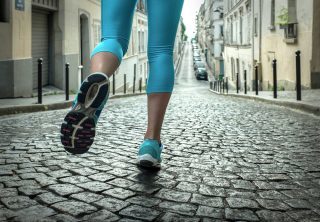
One of the hardest things to work around while training is the need to travel out of town. Often, your time isn’t your own, and your location may not be of your choosing. Obviously, if you are only traveling for a day or two, changing up your training schedule to have a rest day fall during the trip is useful. However, if you are going to be gone for a longer period of time, it’s necessary to make a plan so that you can get that run in.
Here are some tips to make it happen.
Use the hotel treadmill
While a treadmill may not be a runner’s first choice, it’s often the smartest solution for a traveler. No worries about safety when it’s dark outside, or the possibility of getting lost. Most hotels have extended fitness room hours or are willing to make exceptions if you cannot work out on a typical schedule.
Ask the concierge
Hotels often have information about routes available for guests. Some hotels even offer amenities such as water bottles and fruit to their exercising guests. Even if there is nothing formal, many times someone on staff is a runner and can give you ideas.
RELATED: Hotels Get Creative To Help Guests Stay Fit While Traveling
Find a local running store
Running stores are not just a familiar setting in a strange city. They are also a great source of information. Most running store employees are local runners who can advise you on the safest runs in the general area of the store, and perhaps in the surrounding areas as well. If you are lucky (and interested), they may be hosting a group run at a time that works for you.
Find a local gym
If your hotel does not have a fitness center, it might have an agreement with a local gym. Or perhaps you have a membership at home with a gym that has a branch at your destination. If all else fails, many gyms will offer a free or reduced “trial membership” that will likely be worth the expense.
If all else fails, check the Internet
MapMyRun, Strava and other resources often include run suggestions if you search by location. Facebook is full of groups of runners, some designated by location, while others are by some interest. Meetup.com and running group websites can provide useful route information. They may even provide the possibility of a running companion.
Traveling for work or vacation is often challenging. Training for a race is hard enough. But unless you are working 12-hour days in a hotel with no treadmill on the wrong side of town, there are ways to get a run in if you want to.
RELATED: Why You Should Plan a ‘Runcation’ (And Travel Tips for Runners)
The post Five Tips For Getting In A Run While Away From Home appeared first on Competitor.com.
July 4, 2017
3 Shoes That Offer Custom Fit Options For Runners
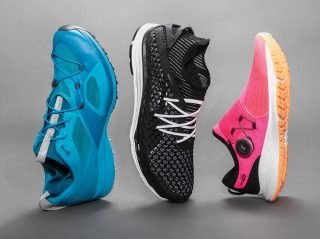
For better or for worse, the modern-day shoe buyer is often a virtual shopper, or perhaps a TOBO (try on, buy online) consumer. With fewer runners making their purchases through brick-and-mortar specialty running stores, the importance of fit and the ability to adjust for improved foot hold has grown much more important. The following shoes all feature customizable qualities for that just-right fit.
RELATED: BOA’s Dial Lacing System is Coming to Popular Running Shoe Brands
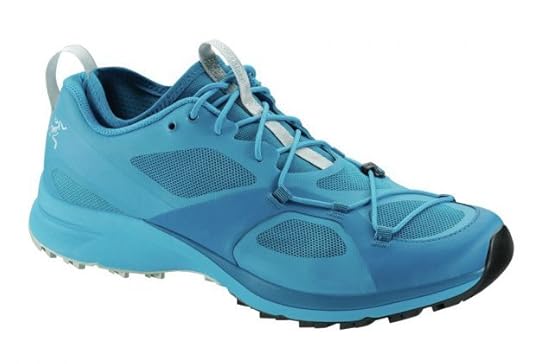
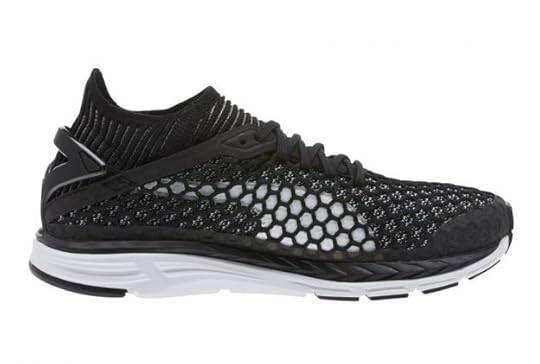
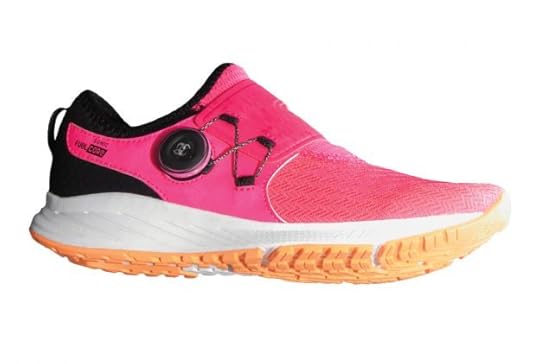
The post 3 Shoes That Offer Custom Fit Options For Runners appeared first on Competitor.com.
This May Make You Rethink Training With So Many Gadgets
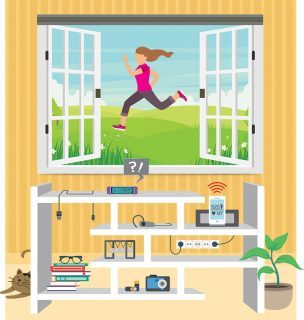
There is an old story that during the Cold War “Space Race” between the U.S. and the Soviet Union, NASA spent a fortune to develop a ballpoint pen that allowed astronauts to write in zero gravity, while the Soviet cosmonauts saved all that by just using pencils. It isn’t exactly accurate—but the story serves as a reminder of the value of simplicity.
In this day and age of sensors that measure everything from the steadiness of your breathing to the difference in where and how frequently one lands on the left foot versus the right, we are supplied with metrics that fill data-storage facilities vast enough to put to shame the warehouse at the end of “Raiders of the Lost Ark.”
Some of these measurement devices are lab-grade or clinical state-of-the-art tools, while others are relatively blunt instruments that rely on algorithms to estimate what is happening under your hood while you run
Consumers of the latter category have filed a class-action lawsuit, claiming that certain wearable devices fail to accurately measure heart rate, and that there is an extremely weak correlation between the user’s actual heart rate as measured by an electrocardiogram (ECG), and the wearable.
Were consumers really misled, or should they have known better? Can a small pod that mounts on your belt, chest, shoe or hat tell that much about your body? Shouldn’t runners seeking to improve their form and performance or to prevent injury be using sophisticated measurement instruments along with the watchful eye and guidance of trained coaches?
Or are these just inexpensive, dumbed-down pacifiers and “millennial devices” that provide perpetual rewards to encourage one to keep running? Does a consumer who purchased a low-cost activity tracker really have a legal gripe with the manufacturer? Heck, there is even a new wearable that measures your heart rate through ear-mounted biosensors and uses artificial intelligence to analyze the data and then coax you through your run via high-end earbuds and a soft, feminine voice. And how serious is an athlete who has to stare at a smartphone as they run in order to read the feedback?
When it comes down to it, all the devices do is help runners better listen to their bodies. They are amplifiers that help you hear what a trained athlete is attuned to hearing loudly and clearly.
Ultimately, once you learn to hear that voice, you can ignore the “metrics” and cease to track your activities. You train by feel and know when to push hard, when to rest, when a little ache is starting to become an injury and it is time for a massage or some cross-training.
Arturo Barrios, an Olympian who held the world record in the 10,000 meters, once gave a presentation at a running shoe store, where he went through the shop’s inventory, picking out item after item, saying to the audience, “You don’t need this heart-rate monitor, you don’t need this book, you don’t need these pricey shoes. … You just need to listen to your body!”
RELATED: A Runner’s Guide To What Not To Do On Social Media
The post This May Make You Rethink Training With So Many Gadgets appeared first on Competitor.com.
Ryan Hall's Blog
- Ryan Hall's profile
- 21 followers



